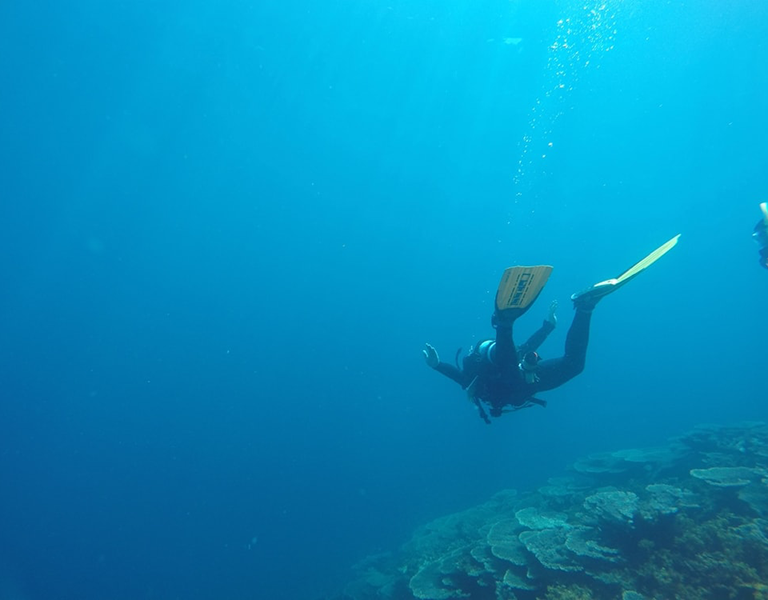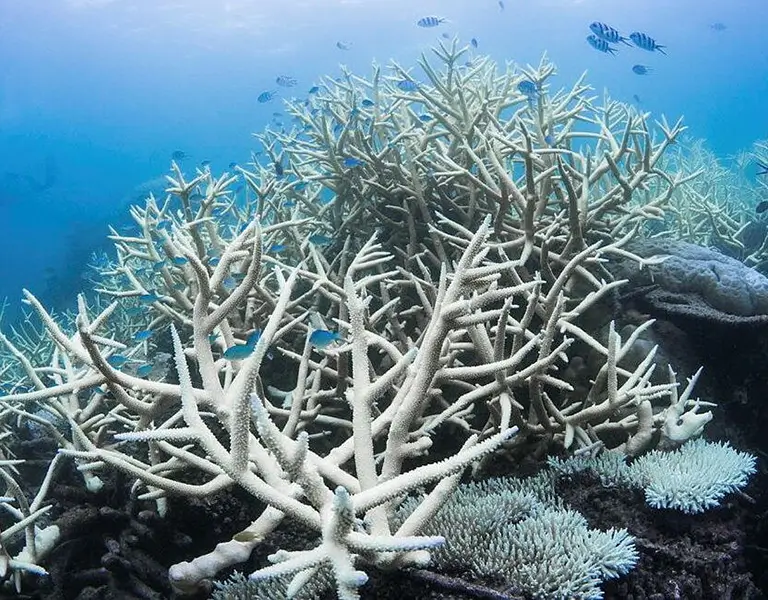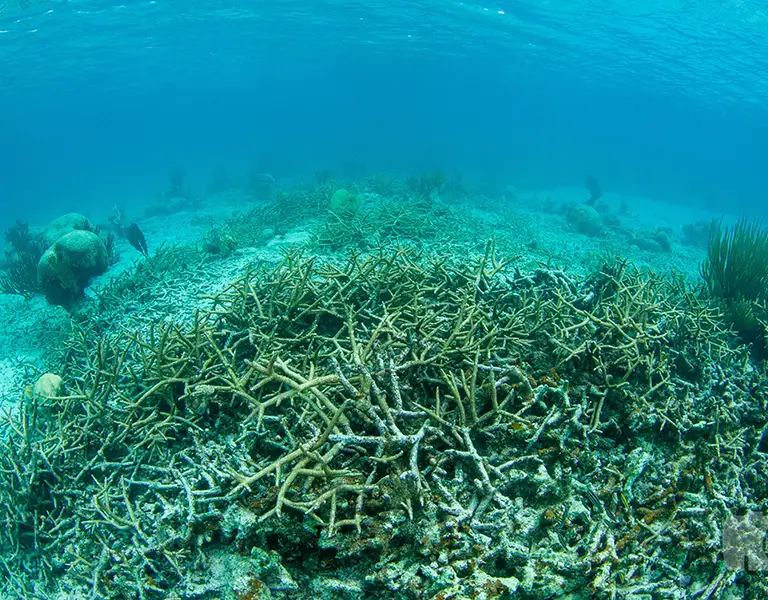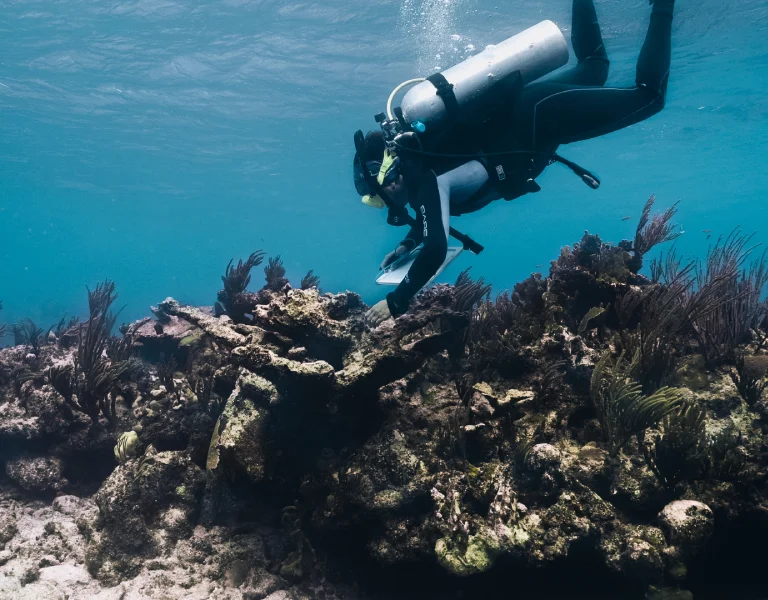As sea levels rise and coastal communities face mounting threats from climate change, effective strategies for protecting our shorelines have never been more critical. From nature-based solutions to innovative reef restoration, these approaches are reshaping how we safeguard both ecosystems and the communities that depend on them.
Key Takeaways
- Coral reefs provide over $1.8 billion in annual flood protection benefits in the United States alone, reducing wave energy by up to 97%1
- The regenerative blue economy integrates ecosystem restoration with economic resilience, creating sustainable solutions for coastal communities
- Nature-based coastal adaptation measures like reef restoration often outperform traditional infrastructure in cost-effectiveness while providing multiple co-benefits
- Coastal areas face exponential increases in flood risk without intervention—annual damages could reach €1 trillion in Europe by 21002
- Combining protection, accommodation, and ecosystem-based approaches creates the most effective defense against rising seas and intensifying storms
Understanding Coastal Adaptation in a Changing Climate
The frontlines of climate change run directly through our coastlines. With over 300 million people living in coastal areas globally and 20 of the world’s 33 megacities situated along shores, developing effective strategies has become an urgent necessity3. These vulnerable zones face a convergence of threats: rising sea levels, intensifying storms, coastal erosion, and ecosystem degradation.
Recent research reveals that adaptation in coastal cities worldwide remains slow, narrow in scope, and predominantly reactive rather than transformative. Many communities focus on responding to current challenges instead of preparing for future climate scenarios. This reactive approach leaves populations increasingly vulnerable as conditions continue to deteriorate.
The stakes are extraordinary. Without improved protection measures, annual coastal flooding damages in Europe could reach €1 trillion by 2100, with 3.9 million people exposed to flooding each year. Yet there’s reason for hope—strategic investments in coastal defense today can prevent exponentially larger losses tomorrow.
The Three Pillars of Coastal Adaptation
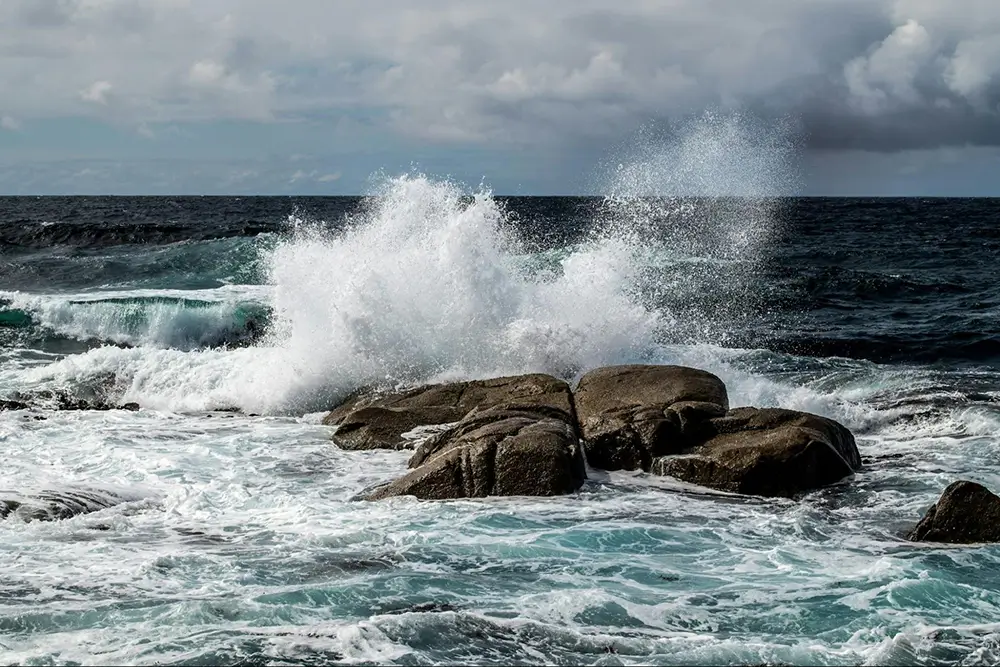
Protection: Defending Against the Waves
Protection strategies involve constructing physical barriers to defend against coastal flooding and erosion, safeguarding human settlements and infrastructure. Traditional approaches have relied heavily on seawalls, levees, and bulkheads. While these engineered structures provide immediate defense, they often come with significant drawbacks: high costs, environmental impacts, and the need for constant maintenance.
The regenerative blue economy offers a different path forward—one that works with nature rather than against it. This approach recognizes that the ocean itself provides powerful allies in coastal defense. Healthy ecosystems like coral reefs, mangroves, and salt marshes act as living infrastructure, absorbing wave energy and stabilizing shorelines while simultaneously supporting biodiversity and local livelihoods.
Accommodation: Adapting to New Realities
Accommodation means adjusting human activities and infrastructure to adapt to changing coastal conditions, such as elevating buildings and enhancing drainage systems to manage flood risks. This strategy acknowledges that some level of change is inevitable and focuses on reducing vulnerability through smart design and planning.
Communities implementing accommodation strategies might establish setback zones for new development, create green spaces that can absorb floodwaters, or retrofit existing structures to withstand inundation. These approaches prove particularly valuable in areas where protection alone cannot eliminate all risks.
Retreat: Strategic Relocation
In some cases, the most prudent strategy involves managed retreat—the controlled withdrawal from the most vulnerable coastal areas. While controversial, this approach recognizes that protecting every inch of coastline may not be feasible or sustainable. Successful retreat programs include buy-back initiatives, relocation assistance, and the restoration of natural shoreline habitats in areas where human infrastructure is removed.
The Power of Nature-Based Solutions
Coral Reefs: Natural Coastal Defense Infrastructure
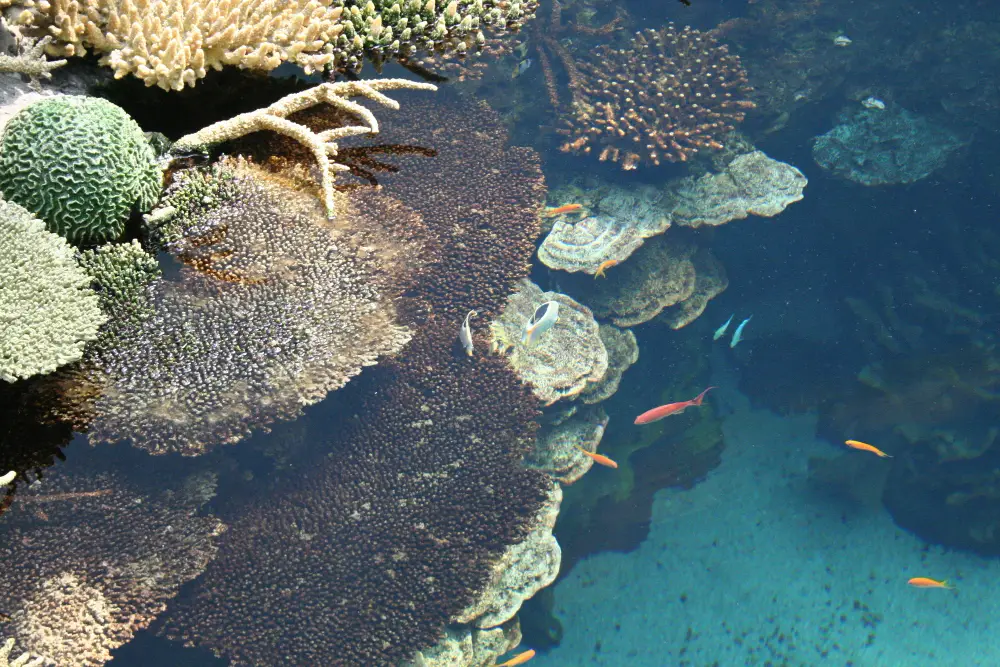
Among nature-based solutions, coral reefs stand out as exceptionally effective coastal defenders. Research demonstrates that coral reefs reduce wave energy by an average of 97%, with reef crests alone dissipating 86% of wave energy. This natural wave attenuation rivals or exceeds the performance of many artificial breakwaters.
The economic value of this protection is staggering. U.S. coral reefs provide flood protection benefits of $1.8 billion annually in averted damages to property and economic activity. In highly developed areas like Florida and Hawaii, annual benefits exceed $10 million per kilometer of coastline4. Without coral reefs, flood damages from 100-year storm events would increase by 91% globally, reaching $272 billion.
But here’s the critical challenge: these natural defenders are under siege. Rising ocean temperatures, acidification, pollution, and physical damage have degraded reefs worldwide. As reefs decline, so does their protective capacity—creating a dangerous feedback loop where communities become increasingly exposed to coastal hazards.
This is where the regenerative blue economy provides a powerful framework for action. Rather than viewing reef degradation as irreversible, this approach recognizes restoration as both an ecological imperative and an economic opportunity. Organizations like Coral Vita are demonstrating that large-scale coral restoration is not only possible but essential for coastal resilience.
How Reef Restoration Enhances Coastal Adaptation
Physics-based modeling shows that coral restorations can decrease potential coastal flooding by up to 30%, with effectiveness depending on reef profile shape, restoration location, restoration dimensions, and wave conditions. This isn’t theoretical—communities that invest in reef restoration see measurable improvements in coastal protection.
Coral Vita’s approach exemplifies how restoration can scale to meet adaptation needs. By growing diverse, climate-resilient corals using land-based farming techniques, the company accelerates the restoration timeline from decades to months. These restored reefs don’t just protect coastlines—they rebuild entire ecosystems, supporting fisheries, tourism, and biodiversity.
The integration of coral restoration with coastal adaptation planning opens new financing opportunities. Reef restoration can be funded through pre-disaster hazard mitigation funds, post-disaster recovery funding, and insurance mechanisms that recognize reefs’ coastal protection services. This recognition of reefs as infrastructure—biological infrastructure—is transforming how governments and insurers approach coastal risk management.
The Regenerative Blue Economy: A Framework for Sustainable Adaptation
The regenerative blue economy moves beyond simply sustaining ocean resources to actively restoring and revitalizing them. This model prioritizes ecosystem restoration through practices like blue carbon conservation, where carbon-absorbing marine ecosystems such as mangroves and seagrasses are preserved and restored. Critically, it’s rooted in participatory governance that empowers coastal and indigenous communities as active stewards.
Principles of Regenerative Ocean Management
The regenerative blue economy rests on several key principles that distinguish it from traditional approaches:
Ecosystem-First Economics: Rather than extracting value until resources are depleted, this model invests in the health of marine ecosystems, recognizing that thriving oceans generate sustainable economic returns. When reefs are healthy, they support commercial fisheries, protect coastal property, and attract tourism—creating far more value than degraded alternatives.
Community Empowerment: The regenerative blue economy fosters blue justice by including coastal and indigenous communities as active stewards, promoting social equity and economic resilience. Local communities aren’t just beneficiaries of ocean health—they’re essential partners in maintaining it.
Long-Term Thinking: Instead of prioritizing short-term gains, regenerative approaches focus on building resilience that will serve communities for generations. This aligns perfectly with the timescales of climate change adaptation, which require sustained commitment over decades.
Financing Coastal Adaptation Through the Blue Economy
One of the most significant barriers to implementing adaptation strategies has been funding. The UN Ocean Conference 2025 set an ambitious goal to mobilize $100 billion in new ocean financing to advance a more resilient blue economy. Achieving this target requires innovative financing mechanisms that bridge the gap between conservation and economic development.
The regenerative blue economy creates opportunities for blended finance—combining public funding, private investment, and philanthropic capital to support projects that deliver both ecological and economic returns. Examples include blue bonds that finance marine protected areas, payments for ecosystem services that compensate communities for conservation, and insurance products that incentivize reef restoration.
Emerging investments like payments for ecosystem services and blue impact bonds turn marine conservation efforts into income sources, attracting funding for projects with tangible ecological and community benefits. These mechanisms recognize that healthy coastal ecosystems aren’t just environmental assets—they’re economic infrastructure that generates measurable value.
Regional Approaches and Success Stories
Mediterranean Marine Protected Areas
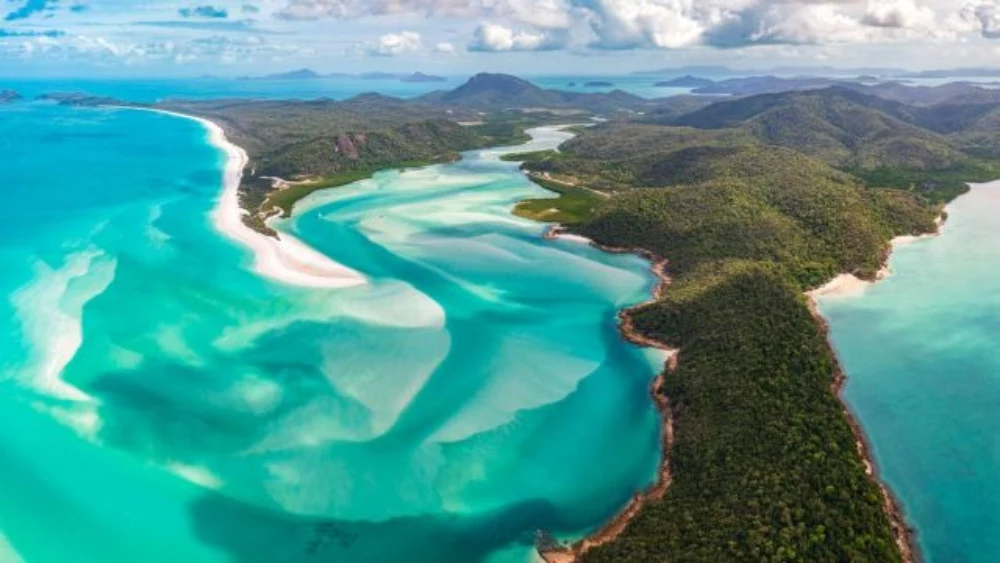
Marine Protected Areas across the Mediterranean rely on local adaptation plans where community co-management enhances biodiversity while providing stable and sustainable income sources. This demonstrates how protection and economic development can advance together rather than in opposition.
Pacific Island Innovation
Small Island Developing States face some of the most acute coastal threats globally. Locally Managed Marine Areas prevalent in the Pacific exemplify how indigenous knowledge and scientific methods converge to protect and regenerate ecosystems. In the Coral Triangle, community-led monitoring systems guide adaptive conservation strategies that replenish fish stocks while strengthening food security.
Caribbean Reef Recovery
The Caribbean has experienced devastating reef loss, yet it’s also becoming a hub for restoration innovation. Communities are recognizing that reef restoration isn’t just about saving corals, it’s about preserving the economic foundation of island nations. Tourism, fisheries, and coastal protection all depend on healthy reefs, making restoration a crucial investment in resilience.
Integrated Strategies for Maximum Effectiveness
Recent research on San Francisco Bay demonstrates that no single strategy can protect all communities from coastal flooding. Effective adaptation requires a mix of approaches tailored to local conditions. The most successful programs combine5:
- Nature-based solutions like wetland restoration and reef rehabilitation
- Smart infrastructure that works with natural systems rather than against them
- Community engagement ensuring local knowledge informs adaptation planning
- Adaptive management allowing strategies to evolve as conditions change
This integrated approach characterizes the regenerative blue economy at its best. Rather than choosing between economic development and environmental protection, it recognizes these goals as fundamentally interconnected.
The Role of Innovation and Technology
A recent study utilizing multi-criteria decision-making frameworks found that mangrove restoration ranked highest for resilience and cost-effectiveness among evaluated coastal adaptation strategies. However, technology is enhancing our ability to implement and monitor these solutions at unprecedented scales.
Advances in coral farming techniques, for instance, are accelerating restoration timelines. Coral Vita’s land-based farms incorporate breakthrough methods including selective breeding for climate resilience, advanced monitoring systems, and optimized growing conditions. These innovations make it possible to produce restoration-ready corals at scales that can meaningfully impact coastal protection6.
Machine learning and remote sensing are revolutionizing how we assess coastal vulnerability and monitor adaptation interventions. These tools help identify where interventions will have the greatest impact and track their effectiveness over time, enabling evidence-based decision making7.
Economic Analysis: The Case for Investment
The cost of enhancing coastal protection is considerably lower than the potential reduction in annual flood losses by the end of the century, demonstrating that spending on adaptation and coastal defense is highly cost-effective. For the European Union, annual adaptation costs are estimated at €1.1-1.8 billion depending on emissions scenarios—a fraction of potential flood damages8.
The cost-benefit analysis becomes even more compelling when considering co-benefits. Nature-based solutions like reef restoration don’t just reduce flood risk—they:
- Support commercial and subsistence fisheries
- Attract tourism revenue
- Enhance biodiversity
- Sequester carbon
- Improve water quality
- Provide educational and research opportunities
When these multiple value streams are considered, the return on investment for ecosystem-based adaptation often exceeds that of traditional infrastructure by substantial margins.
Overcoming Implementation Challenges
Despite the clear benefits, several barriers slow coastal adaptation progress:
Funding Gaps: Local market actors like domestic financial institutions and pension funds collectively manage billions in assets, yet only a fraction is directed toward blue economy or climate resilience investments due to perceived risks. Bridging this gap requires de-risking mechanisms and demonstrated track records of success.
Time Horizons: Infrastructure investors often seek returns within 5-10 years, while ecosystem restoration may take longer to generate full benefits. This mismatch can be addressed through blended finance structures that accommodate different return timelines.
Coordination Complexity: With more than 100 cities and nine counties bordering San Francisco Bay, regional cooperation is essential to address flood risks that intensify with climate change. Effective adaptation requires unprecedented collaboration across jurisdictions.
Knowledge Gaps: Many coastal managers lack detailed information about the cost-effectiveness of nature-based solutions for their specific contexts. Filling these gaps through research, monitoring, and knowledge-sharing is essential9.
The Path Forward: Scaling Solutions
The foundation exists for a transformation in how we protect coastal communities. The science is clear, the economic case is strong, and proven solutions are available. What’s needed now is the will to act at the necessary scale.
The regenerative blue economy provides a roadmap for this transformation. By recognizing coastal ecosystems as valuable infrastructure worth protecting and restoring, we can unlock new funding streams and implementation pathways. By empowering local communities as stewards and beneficiaries, we can ensure solutions are sustainable and equitable. By combining traditional knowledge with cutting-edge innovation, we can accelerate the pace of restoration to match the urgency of the crisis10.
Organizations pioneering this approach, like Coral Vita, demonstrate that large-scale restoration is achievable. Their work in the Bahamas, Caribbean, and beyond shows that with the right techniques, financial models, and community partnerships, we can rebuild reef ecosystems that protect millions of people while supporting biodiversity and livelihoods11.
Conclusion
The challenge of coastal adaptation is immense, but so is the opportunity. By embracing nature-based solutions rooted in the principles of the regenerative blue economy, we can build resilience that lasts for generations. Coral reef restoration stands out as a particularly promising strategy, offering extraordinary protection value while supporting ecosystem recovery and community prosperity.
The clock is ticking—sea levels continue rising and storms continue intensifying. But unlike many climate challenges, we have proven solutions ready to deploy. What’s required is leadership, investment, and collaboration to implement them at scale. The communities that act decisively today, combining protection, accommodation, and ecosystem restoration in integrated strategies, will be the ones that thrive tomorrow.
The ocean has always protected us. Through the regenerative blue economy and strategic coastal adaptation, we can protect it in return—creating a virtuous cycle of resilience that serves both people and planet12.
About Coral Vita
Coral Vita is a mission-driven company dedicated to restoring our world’s dying and damaged reefs. Using innovative land-based farming techniques, Coral Vita grows diverse and resilient corals in months instead of the decades they take in nature. These corals are then transplanted into threatened reefs, helping to preserve ocean biodiversity while protecting coastal communities that depend on healthy reefs for protection, food, and income.
Founded by environmental entrepreneurs Sam Teicher and Gator Halpern, Coral Vita’s high-tech coral farms incorporate breakthrough methods to restore reefs in the most effective way possible. In 2021, the company was recognized as the inaugural winner of Prince William’s Revive Our Oceans Earthshot Prize Winner for their pioneering work in coral restoration.
To learn more about Coral Vita’s work or to get involved in coral reef conservation efforts, visit their website at www.coralvita.co or contact them directly through their Contact Us page.
Frequently Asked Questions
What are the most effective coastal adaptation strategies?
The most effective approaches combine nature-based solutions like reef restoration and wetland conservation with smart infrastructure planning. Integrated strategies that protect, accommodate, and work with natural systems consistently outperform single-approach methods in both cost-effectiveness and long-term resilience.
How do coral reefs protect coastlines from flooding?
Healthy reefs act as natural breakwaters, reducing wave energy by up to 97% before waves reach shore. This protection prevents flooding and erosion while supporting biodiversity and fisheries. Degraded reefs lose protective capacity, making restoration essential for coastal communities.
What is the regenerative blue economy?
The regenerative blue economy is an approach that actively restores ocean ecosystems while creating sustainable economic opportunities. Unlike traditional models, it prioritizes ecosystem health, community empowerment, and long-term resilience over short-term extraction.
How much does coastal adaptation cost?
Adaptation costs vary by location and strategy, but investments consistently prove far cheaper than flood damages. For example, Europe faces annual adaptation costs of €1-2 billion versus potential damages of €1 trillion without action. Nature-based solutions often cost less than traditional infrastructure.
References
- https://www.nature.com/articles/s41893-021-00706-6 ↩︎
- https://op.europa.eu/webpub/mare/eu-blue-economy-report-2025/energy-transition-and-costal-flood-impacts/climate-change-and-nature-based-solutions-against-coastal-floods-in-europe.html ↩︎
- https://www.mdpi.com/2073-4441/13/16/2151 ↩︎
- https://www.usgs.gov/news/national-news-release/coral-reef-barriers-provide-flood-protection-more-18000-people-and-18 ↩︎
- https://www.frontiersin.org/journals/marine-science/articles/10.3389/fmars.2021.653945/full ↩︎
- https://www.nature.com/articles/s41467-018-04568-z ↩︎
- https://www.nature.com/articles/ncomms4794 ↩︎
- https://www.nature.com/articles/s44284-024-00106-9 ↩︎
- https://news.ucsc.edu/2025/10/coastal-flooding-in-the-bay-area-new-research-illuminates-strategies-for-adaptation/ ↩︎
- https://www.sciencedirect.com/science/article/abs/pii/S0025326X25005351 ↩︎
- https://www.orfonline.org/expert-speak/regenerative-blue-economy-a-strategic-framework-for-global-ocean-governance ↩︎
- https://www.convergence.finance/news/6zNTOWpsWWqH3bYbklSykF/view ↩︎




